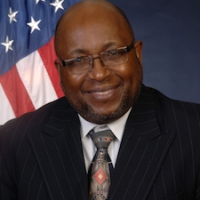Jun022015
Posted at 2:30 PM
Post by Dr. Willie E. May
Yesterday, I had the pleasure of attending a day-long celebration, hosted by my agency, the National Institute of Standards and Technology (NIST) and US Ignite, called the Global City Teams Challenge Expo. It was the culmination of a nine-month challenge to create teams that would use technology to improve communities, but it was clearly more of a beginning than an ending.
The event focused on the next generation of the Internet, which will go beyond connecting people to people. The coming Internet of Things as some call it, will connect us with the machines that keep our society running and with better data for decision making from a host of brand new sources. In the process, it will require new ways to protect our privacy and our IT networks.
With the Internet of Things we will see some eye-catching changes to our society, such as driverless cars. Other changes will be subtle, like smart thermostats in our homes and public lighting systems that grow brighter as pedestrians approach.
Why do we need to link our streetlights and thermostats to the Internet? Because as more people move into cities, we will need to operate them in ways that minimize the use of scarce resources, maximize value for taxpayers and protect the environment.
The United Nations predicts that more than 84 percent of the world’s population will be living in urban areas by the year 2050. That’s up from 30 percent in 1950 and 54 percent in 2014. In short, we are becoming an urban species.
More than 60 teams from 51 cities around the world—made up of city planners and technology innovators—came to the expo to show off projects that are solving real challenges in real communities.
I was joined at the expo by Their Majesties, King Willem-Alexander and Queen Máxima of the Netherlands, a country that has been a leader in developing ways to use technology to improve the efficiency and sustainability of urban life.
The expo featured a number of projects from around the United States. For example, I learned that Chicago will soon have a 500-node sensor network, essentially a “Fitbit® for the city” to improve air quality, reduce noise pollution and improve traffic flow.
A senior living facility in Montgomery County, Md., has deployed sensors that not only detect hazards such as toxic gases and water contaminants, but also provide readouts from devices such as heart monitors and oxygen machines to keep residents safe.
And Los Angeles, Las Vegas and Atlanta are installing sensor networks in city water systems to detect leaks. Aboveground, these cities are adding smart lighting and video systems that will help save energy and manage traffic.
Along with these new capabilities, the Internet of Things will bring great economic opportunities. Experts predict that by 2023 the market for connected devices could total between 9 and 19 trillion dollars. That would surpass the smart phone, PC and tablet markets combined.
To make that happen, we will need standards that make sure technologies can interact reliably and safely while protecting privacy and security. This is where NIST comes in. Our mission is to advance innovation through measurements, standards and technology. A key way we do that is by convening experts and stakeholders, in the U.S. and internationally, in emerging technology areas.
We are not on the side of any particular company, industry or other stakeholder in the marketplace. We are on the side of a level playing field. We help ensure that the standards needed to develop and then measure the performance of these new technologies are based on the sound principles of science.
And as part of our convening role, I was honored to lead a brief discussion during the event with mayors, city managers and local chief technology officers. We discussed a wide range of exciting activities sponsored by cities of all sizes and plan to maintain the momentum generated at the expo by finding ways to broadly share the lessons learned from these efforts.
Through this expo and many follow-on activities, NIST and its many partners hope to pave the way for an Internet of Things that grows the economy and improves the urban landscape for all of the world’s citizens.




